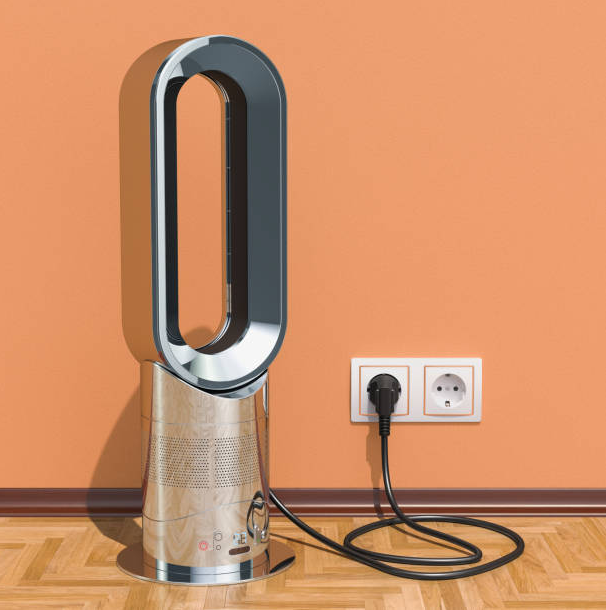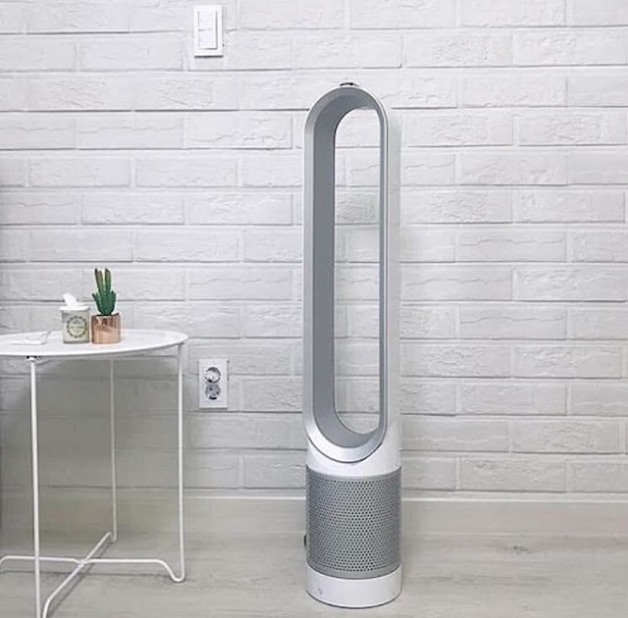When it comes to staying cool, an electric fan is a reliable and energy-efficient choice. However, ensuring electric fan safety is crucial to prevent accidents, prolong the fan’s lifespan, and maintain optimal performance. Whether you’re using a portable electric fan or a larger model, following proper safety practices is essential. In this comprehensive guide, we’ll share essential electric fan safety tips to help you use your fan safely while also covering electric fan maintenance, electric fan setup, and electric fan troubleshooting. Let’s explore how to keep your electric fan safe and effective for years to come!
Why Electric Fan Safety Matters
Electric fans are generally safe, but improper use or neglect can lead to hazards like electrical issues, fire risks, or physical injuries. By prioritizing electric fan safety, you can enjoy the cooling benefits of your fan without worry. From proper placement to regular maintenance, these electric fan tips will help you avoid common pitfalls and ensure safe operation, whether you’re using the fan during the day or running it all night.
Top Electric Fan Safety Tips
Here are the most important electric fan safety tips to keep in mind when using, cleaning, or maintaining your fan.
1. Inspect Your Fan Before Use
Before plugging in your electric fan, perform a quick inspection to ensure it’s in good condition. A damaged fan can pose serious safety risks. Here’s what to check:
- Examine the Power Cord: Look for frayed, cracked, or exposed wires. If the cord is damaged, do not use the fan until it’s repaired or replaced.
- Check the Blades: Ensure the blades are not bent, cracked, or loose, as damaged blades can cause the fan to wobble or malfunction.
- Inspect the Grille: Make sure the protective grille is secure to prevent fingers, hair, or objects from coming into contact with the blades.
- Test Stability: Place the fan on a flat, stable surface to prevent it from tipping over during operation.
Regular inspections are a key part of electric fan maintenance and help prevent accidents before they happen.
2. Follow Proper Electric Fan Setup
A correct electric fan setup is critical for both safety and performance. Improper placement can lead to tipping, overheating, or reduced airflow. Follow these setup tips:
- Use a Stable Surface: Place your portable electric fan on a flat, level surface to avoid vibrations or tipping.
- Keep Away from Edges: Position the fan away from the edges of tables or countertops to reduce the risk of it falling.
- Maintain Clear Space: Ensure there’s at least a foot of clear space around the fan to allow proper airflow and prevent overheating.
- Avoid Obstructing Airflow: Keep the fan away from curtains, furniture, or other objects that could block airflow or get caught in the blades.
Proper placement not only enhances cooling but also reduces the risk of accidents. For more setup advice, check out this cooling guide.

3. Practice Safe Electrical Use
Electrical safety is a cornerstone of electric fan safety. Mishandling the fan’s electrical components can lead to shocks, fires, or damage to the fan. Here’s how to stay safe:
- Unplug Before Handling: Always unplug the fan before cleaning, adjusting, or performing any maintenance to avoid electric shock.
- Use a Dedicated Outlet: Plug the fan directly into a wall outlet rather than using an extension cord or power strip, which can overheat if overloaded.
- Avoid Wet Environments: Never use the fan in damp areas like bathrooms or near water sources to prevent electrical hazards.
- Check Voltage Compatibility: Ensure the fan’s voltage matches your outlet to avoid electrical damage or malfunctions.
By following these electrical safety practices, you can minimize risks and keep your fan running safely.
4. Clean Your Fan Safely
Regular electric fan cleaning is essential for maintaining performance and safety, as dust buildup can cause overheating or motor strain. Here’s how to clean an electric fan safely:
- Unplug the fan before starting any cleaning.
- Remove the front grille according to the manufacturer’s instructions.
- Use a soft brush or cloth to gently clean the blades, removing dust and debris.
- Wipe down the grille and motor housing with a damp (not wet) cloth.
- Ensure all parts are completely dry before reassembling and plugging in the fan.
Cleaning your fan every 3–6 months prevents dust-related issues and keeps it running efficiently. For detailed cleaning tips, visit electricfanatic.com.
5. Keep Children and Pets Safe
Electric fans can pose risks to curious children and pets. To ensure their safety:
- Use a Fan with a Secure Grille: Choose a fan with a tightly secured grille to prevent fingers or paws from reaching the blades.
- Place Out of Reach: Position the fan where children or pets cannot easily access it, such as on a high surface or in a cordoned-off area.
- Supervise Use: If children are around, supervise the fan’s operation to prevent accidents.
- Secure the Cord: Keep the power cord tucked away or secured to avoid tripping or pulling the fan over.
These precautions help create a safe environment for everyone in your household.
6. Avoid Running a Damaged Fan
If your fan shows signs of damage or malfunction, stop using it immediately. Common issues to watch for include:
- Unusual noises like grinding or rattling, which may indicate motor or bearing problems.
- Excessive vibrations, which could suggest loose parts or unbalanced blades.
- Overheating, which may occur if the motor is overworked or clogged with dust.
If you notice any of these issues, perform electric fan troubleshooting to identify the cause. If the problem persists, consider repairing or replacing the fan. Running a damaged fan can lead to electrical hazards or further damage.
Electric Fan Maintenance for Safety
Regular electric fan maintenance is key to ensuring safe operation. By keeping your fan in good condition, you reduce the risk of malfunctions and improve its performance. Here are some maintenance tips:
- Tighten Loose Parts: Periodically check and tighten screws, blades, and other components to prevent vibrations or accidents.
- Lubricate the Motor: If your fan’s motor is serviceable, apply a small amount of lubricant to the bearings to reduce friction and prevent overheating.
- Store Properly: When not in use, store your fan in a dry, dust-free environment to protect it from damage.
- Replace Worn Parts: If blades, grilles, or other components are damaged, replace them promptly to maintain safety and performance.
Regular maintenance not only enhances electric fan safety but also extends the fan’s lifespan. For more maintenance advice, check out this best electric fan guide.

Electric Fan Troubleshooting for Safety Issues
If you encounter issues with your fan, electric fan troubleshooting can help identify and resolve potential safety hazards. Here are common problems and solutions:
- Noisy Operation: Noise could indicate loose parts, dust buildup, or motor issues. Tighten screws, clean the fan, or lubricate the motor as needed.
- Overheating: If the fan feels hot to the touch, it may be overworked or clogged. Unplug it, let it cool, and clean it thoroughly.
- Weak Airflow: Reduced airflow could be due to a dirty grille or blades. Clean the fan and check for obstructions.
- Electrical Issues: If the fan sparks, trips a breaker, or doesn’t turn on, stop using it immediately and consult a professional for repairs.
Addressing these issues promptly ensures your fan remains safe to use.
Additional Electric Fan Tips for Safe Use
Beyond the core safety practices, here are additional electric fan tips to enhance safety and performance:
- Use a Timer: If you’re running the fan overnight, consider using a timer to turn it off after a few hours to reduce wear and energy use.
- Choose the Right Fan: Select a fan with safety features like a sturdy grille, automatic shut-off, or overheat protection, especially for prolonged use.
- Monitor Usage: Avoid running the fan continuously at maximum speed, as this can strain the motor and increase the risk of overheating.
- Keep Ventilated: Ensure the room is well-ventilated to prevent the fan from circulating stale or hot air, which can reduce its effectiveness.
Conclusion: Stay Cool and Safe with Your Electric Fan
By following these electric fan safety tips, you can enjoy the cooling benefits of your fan without compromising safety. From proper electric fan setup and regular electric fan cleaning to thorough electric fan maintenance, these practices ensure your fan operates safely and efficiently. Whether you’re using a portable electric fan or a larger model, prioritizing safety will keep you cool and worry-free.
For more guidance on safe fan use or choosing the best fan for your needs, visit electricfanatic.com. With the right care and precautions, your electric fan will provide safe, reliable cooling for years to come!